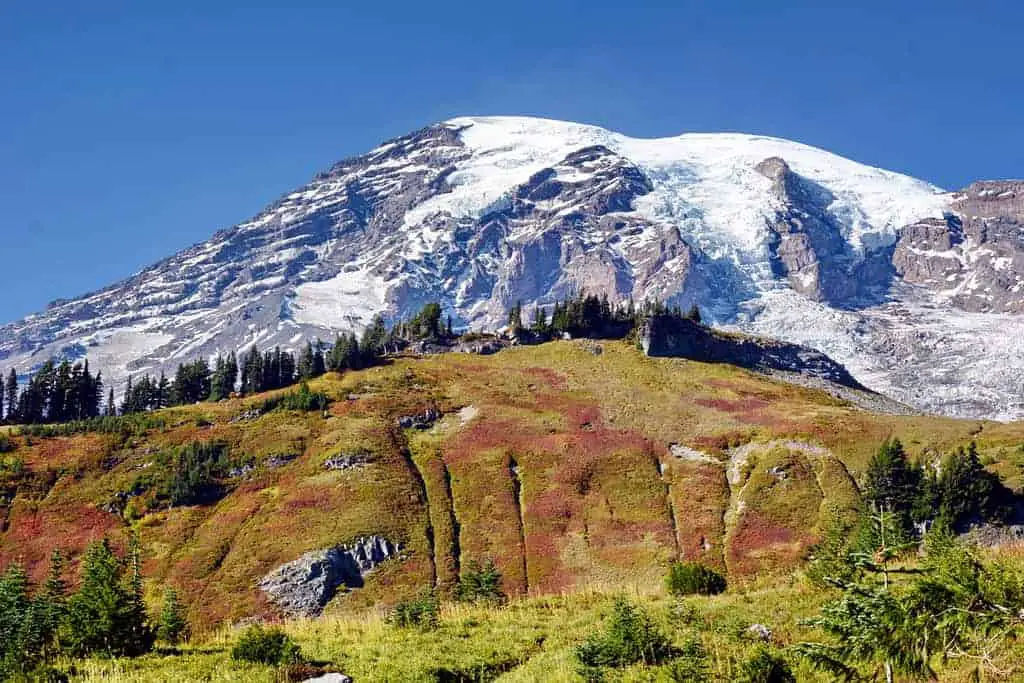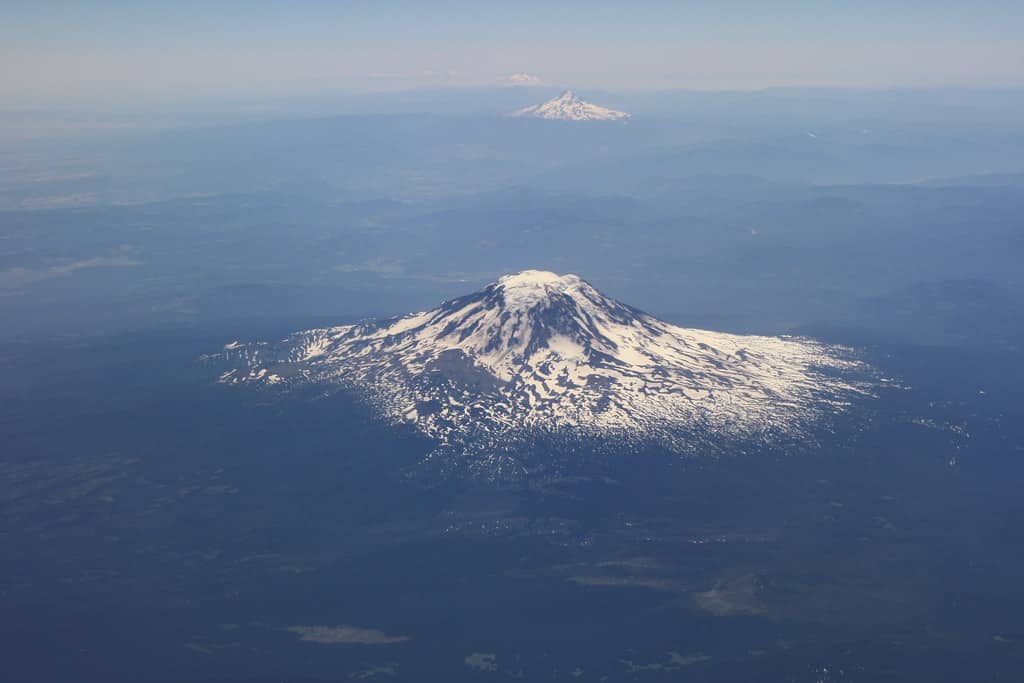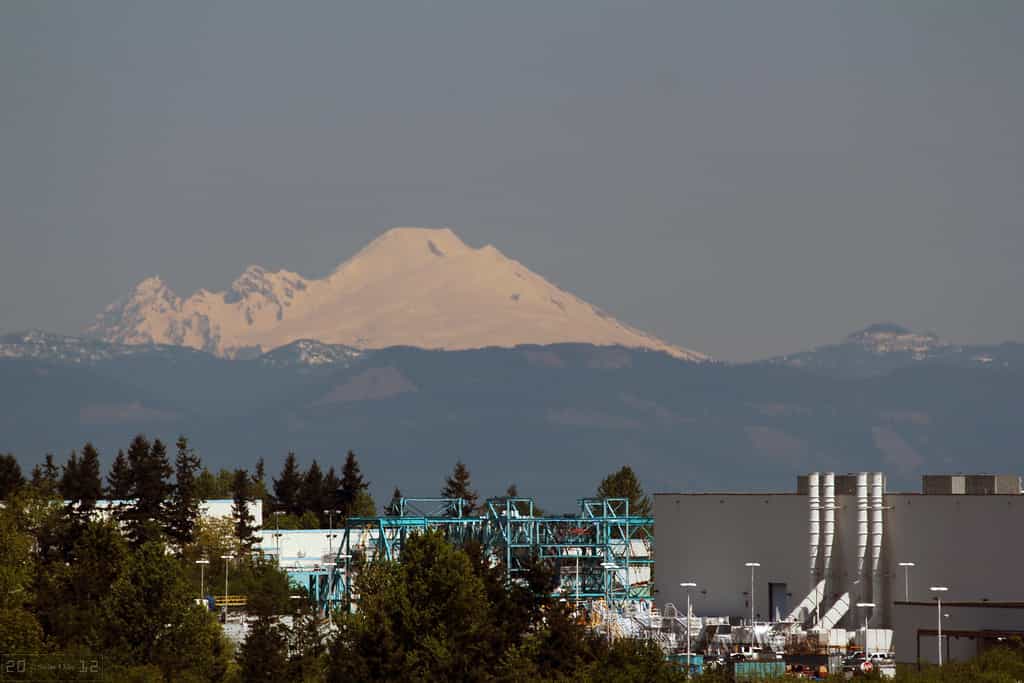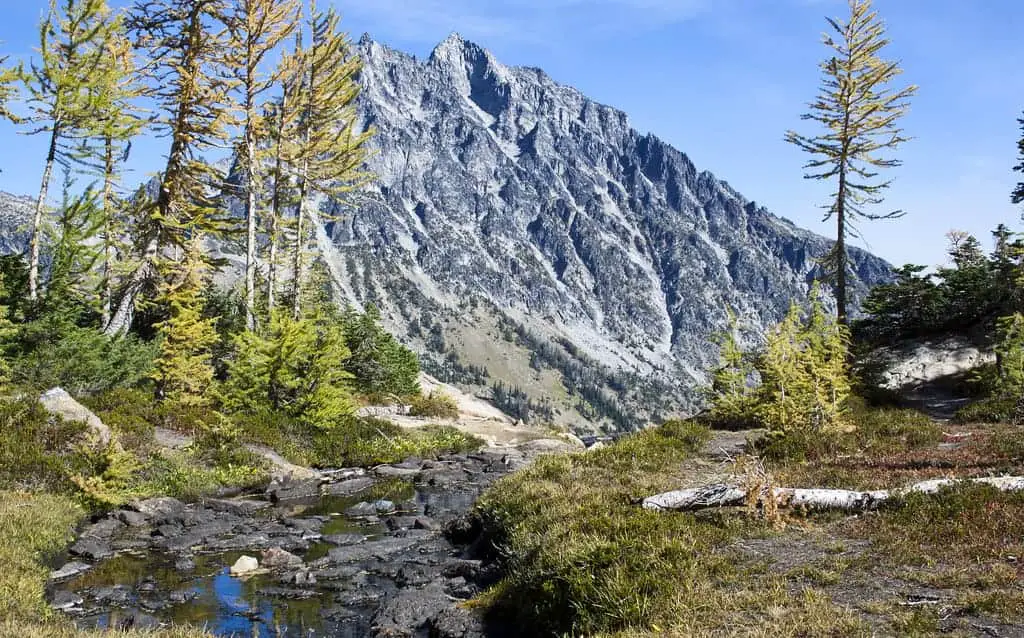Washington State is home to some of the most beautiful mountains in the world. Mount Rainier, Mount Baker, and Mount Adams are just a few of the mountains that draw people from around the world. But many other beautiful mountains within this state’s borders should not be overlooked.
Mount Rainier
Mount Rainier is the highest peak in Washington and the Cascade Range. It’s a volcanic mountain that sits about 60 miles southeast of Seattle and can be seen from many locations throughout the state. Mount Rainier is an active volcano, meaning it has erupted in the past.
Mount Rainier was named after Admiral Peter Rainier, who sailed under Captain George Vancouver in 1792 to explore Puget Sound and its surroundings. The mountain subsequently became known as Mount Tacoma until 1899, when a new name was adopted by residents—Mount Tahoma—because they could not pronounce “Tacoma” correctly (they said “Tahoma”).
The U.S. Geological Survey Board on Geographic Names officially renamed it, Mount Rainier, after Charles Tait Bridle’s 1894 painting of the mountain with that title; however, some people still refer to this peak as Tahoma today due to its popularity among early settlers who lived nearby at Nisqually Indian Village near present-day Yelm or Skykomish.
Mount Baker
The mountain’s name comes from the Native Americans who lived there and called it “Koma Kulshan,” which means “great white peak.” The mountain is known as “Kit Peak” or “Baker.”
Mount Baker sits in North Cascades National Park and is one of the most accessible high peaks in Washington state. It’s also one of the most popular—over 2 million people visit this mountain yearly! The trailhead for most routes is just a few miles from downtown Bellingham, so you can start your hike without even having to drive that far away from civilization.
For those looking for an even shorter drive: Skagit Valley Tulip Festival takes place on weekends during April; it’s an annual festival featuring hundreds of acres filled with blooming tulips (and other flowers). In addition to all that natural beauty, there are plenty of places where you can get up close and personal with wildlife like raccoons or elk too!
We recommend hiking Mount Baker via Cascade Pass since it offers stunning views into both Mount Shuksan (which has its glaciers) and Mount Baker itself! You’ll enjoy scrambling over rocks while viewing waterfalls along your way up this trail until eventually reach another world – where everything looks different because it’s covered by snow instead of greenery!
Mount Adams
Mount Adams is the second-highest mountain in Washington state, standing at 12,280 feet. Its name comes from President George Washington and his secretary of war, Henry Knox. It is also known as Koma Kulshan and is part of the Cascade Range.
The mountain has two prominent peaks: South Peak at 11,286 feet and North Peak at 11,285 feet high. Both peaks offer stunning views of other mountains in the range and Puget Sound. Mount Adams is famous for hiking, climbing (if you’re experienced), backcountry skiing, and camping, with over 30 miles of trails available for visitors to enjoy during their visit to this beautiful area!
Mount Olympus
Mount Olympus, also known as Boundary Peak 168 (not to be confused with Mount Olympus in Greece), is a stratovolcano located in the Olympic Mountains of Washington state. It’s one of two peaks that make up Olympia’s namesake mountain range, the other being Mount Washington.
Explorer George Vancouver named Mount Olympus in 1792 during his journey through Puget Sound and the Strait of Juan de Fuca. According to local Native Americans, Mount Olympus was believed to be created when Coyote blew down an oak tree using a powerful gust of wind; after this incident, Coyote turned into stone and became part of the mountain itself.
USA Quiz
How many questions would you like?
The second highest point in Washington state at 6593 feet above sea level (approximately 2000 meters), Mount Olympus boasts snow-capped rocky peaks and glaciers year round while remaining largely untouched by humans except for some ski resorts near its base.
Glacier Peak
Glacier Peak is your best bet if you’re looking for a hike with the most dramatic scenery. The mountain’s highest point rises over 10,000 feet above sea level and is covered in snow much of the year. While it was once a glacier that covered much of its surface, today, you’ll find views of snow-capped peaks and alpine lakes on your way to the summit.
The trail begins at the Glacier Peak Wilderness boundary, about a mile from Swift Creek Campground. From there, it’s a steady climb over 6 miles to the summit. The trail is well-marked and easy to follow for most of its length, with only a few sections where you may need to use your hands for balance or assistance climbing over fallen trees.
Mount Stuart
Mount Stuart, located in North Cascades National Park, has an elevation of 10,822 feet and is a famous climb for experienced hikers. The mountain is 1 hour away from Seattle, 2 hours away from Vancouver, and can be reached by driving on Highway 20.
The mountain has a steep climb and is not recommended for beginners. The trail is well-marked, and there are plenty of signs to help you find your way. The climbing route starts at Marblemount, the closest town to Stuart.
Abercrombie Mountain
Located in the North Cascades National Park, Abercrombie Mountain is a volcanic peak that rises to 5,946 feet. It is part of the Cascade Range, a chain of volcanoes stretching from British Columbia to Washington and Oregon. The mountain was named after Alexander Ross’s partner John Sutter in 1891 by members of an expedition led by Joseph O’Neil.
The mountain is located within the Ross Lake National Recreation Area, which is managed by the National Park Service. The recreation area offers visitors a variety of activities, including hiking, camping, fishing, and boating.
Round Mountain
This is an active volcano located in the Cascade Range. The mountain is named after its shape, which resembles a round dome. It’s also known as Big Dome.
The elevation of this peak is 6,832 ft (2,086 m) above sea level, making it one of the highest mountains in Washington state.
Regarding difficulty level and tourist attraction, Round Mountain has been described as “Not Difficult” by most hikers and climbers who have attempted to summit it. However, you should always prepare for possible hazards such as extreme weather conditions and slippery surfaces when hiking any mountain!
Mount Spickard
Mount Spickard is a mountain in the North Cascades region of Washington state. It is the highest peak in the North Cascades, reaching 10,220 feet above sea level.
Mount Spickard was named after William Edward Spickard and his brother Frank Spencer Spickard who were members of the British Columbia Boundary Commission between 1858 and 1860. The two brothers found their way from Seattle to Fort Colville via an overland route through present-day Roslyn, Snoqualmie Pass, and Vantage before traveling southward along the east side of Lake Chelan until reaching Stehekin at its headwaters (a distance of about 300 miles).
The mountain’s prominence makes it potentially one of Washington’s most challenging climbs and one with great views—two reasons why many climbers choose this destination when they’re looking for somewhere new to explore in Washington State!
Copper Butte
Copper Butte is located in the Pasayten Wilderness, east of the Cascade Mountains. It rises to an elevation of 8,375 ft (2,550 m).
The hike up Copper Butte is rated moderate-to-difficult due to steep inclines and switchbacks on rocky terrain. It takes about 4 hours to reach the summit from the trailhead parking lot at milepost 78 on Washington State Route 20. The total length of this hike is 6 miles (10 km) roundtrip with a 1,300 ft (400 m) elevation gain.
There are some great mountains in Washington State.
As you may have guessed, Washington State has many mountain ranges. From the low-lying Cascades to the high peaks of the Olympics, there is no shortage of places to go hiking and camping. Mount Baker has some of the best powder found in North America for skiers and snowboarders.
It also boasts an enormous amount of terrain for all skill levels. Those looking for something more challenging can take on some steep couloirs or even try their hand at alpine skiing (or watch others do it).
Mount Adams is another popular destination for climbers due to its proximity to Seattle and its scenic views from 12,276 feet (3,741 meters). The ascent is not easy; it requires careful planning and skillful navigation through rock bands, with more than 1,500 routes available for experienced climbers who have acquired proper permits.
Conclusion
It’s easy to forget just how many great mountains there are in Washington State. There are many great hiking trails, scenic views, and opportunities for camping. If you could visit one of these fantastic places, I would highly encourage it!








